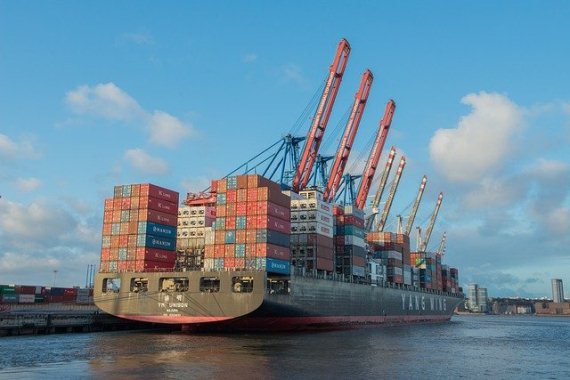-
The new dispute between the International Longshore and Warehouse Union and the US West Coast port employers that started during the second quarter of 2021 could go on longer
-
The pandemic could weaken additional parts of the global container shipping system
-
Flash points between the ocean carrier industry and the forwarder/non-vessel operating sector are another potential disruptor
-
Rising difficulties and disputes over minimum quantity commitments could also impact supply chain flows
There are four new potential disruptors in the supply chain that international shippers should anticipate and prepare for in 2022, according to Drewry.
In its year-end logistics briefing, Drewry, a UK-based shipping research and consulting firm, identifies the four potential new disruptions and provides guidance on possible priority issues shippers should watch out for next year.
The first likely disruptor is the dispute between the International Longshore and Warehouse Union (ILWU) and the US West Coast port employers that started during the second quarter of 2021 and could go on longer. Last month, the ILWU rejected the proposal of the port administration to extend its current labor contract for another year, to July 1, 2023. The two sides are expected to begin contract negotiations in the spring.
Drewry said a conflict will push back by weeks or even months the reduction of acute congestion at US West Coast ports, with ripple effects on global carriers’ schedules and on the ability of ports in Asia to handle unscheduled ships or bunched ships affected by problems in the US.
For beneficial cargo owners (BCOs), now is the time to look at alternative routes to avoid US West Coast ports, said Drewry.
The second possible disruptor is if the pandemic weakens additional parts of the global container shipping system.
China’s current zero tolerance Covid policy makes the country particularly likely to shut down, and without prior warning, more/secondary ports, more barge operations and more feeder operations as new cases arise. Further lockdown measures in other countries, triggered by new Covid variants or pandemic waves, also cannot be ruled out.
“We fear the prospect of more dislocations / lack of coordinated asset deployment between ocean carriers and rail carriers in the US, in particular. Seafarer shortages and travel restrictions may worsen with any surge in cases, which will further limit the number of sailings shipping companies are able to make to meet demand,” Drewry said.
The third is flash points between the ocean carrier industry and the forwarder/non-vessel operating (NVO) sector.
Drewry said some ocean carriers are withdrawing from non-vessel owning common carrier (NVOCC) relationships and others are making it difficult for NVOs to offer carrier-like fixed contract rates to shippers under preferential “named account” terms agreed in advance with the ocean carriers.
“The role and the pricing strategy of the NVOCC have shifted since the start of the pandemic with many now offering shorter term and varying premium rate levels in return for finding space and equipment solutions. Medium and small NVOs may find themselves excluded from BCOs’ large annual ocean tenders,” said Drewry.
The last major possible disruption trigger involves difficulties dealing with minimum quantity commitments (MQCs) and widespread disputes about MQCs.
More BCOs—even the largest ones—will have to accept the new reality of the market, said Drewry, adding that shippers cannot expect to ship 10 containers one week, 50 containers the next week, and hope to get 100% capacity for both weekly volumes.
Carriers and NVOs are already telling BCOs that their capacity in 2022 will be the contractual MQC per annum “divided by 52.”
“Whilst capacity constraints have been a common theme for 2021, for 2022 we see the additional constraint that full or high payment of the freight will be due when the capacity is not used by the shipper,” the report said.
Drewry believes that the majority of BCOs are not organized to manage this type of volume commitment. Disputes will spread in 2022 about how to deal with excess volume above weekly MQC and deficit volume below weekly MQC and about associated penalty clauses.
Advice to shippers
Drewry advises shippers to plan ahead by optimizing internal operations such as by improving MQC management processes, volume forecasting, and communication of forecasts to carriers.
The report also sees the need for a contingency plan for ILWU-related US West Coast port shutdowns to mitigate the next port crisis.
Shippers should likewise prioritize working with the right logistics providers and strengthen their carrier relationships and business continuity plans to help deal with “the next crisis” as and when it happens.
Drewry also advises shippers to “review your supply chain and your transport networks to reduce your exposure to the super-inflated container shipping costs, which are expected to remain so in the medium term.”





